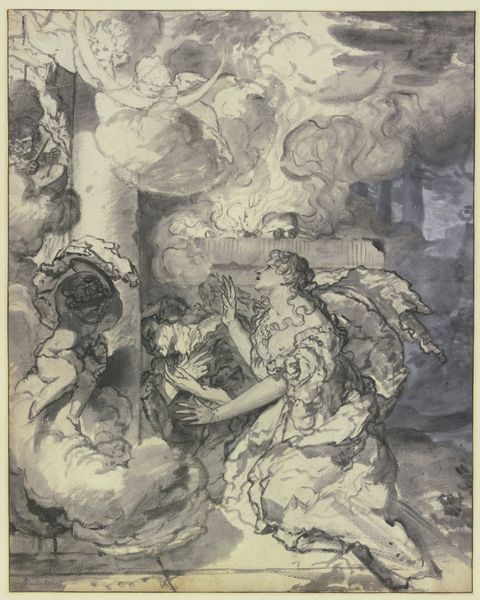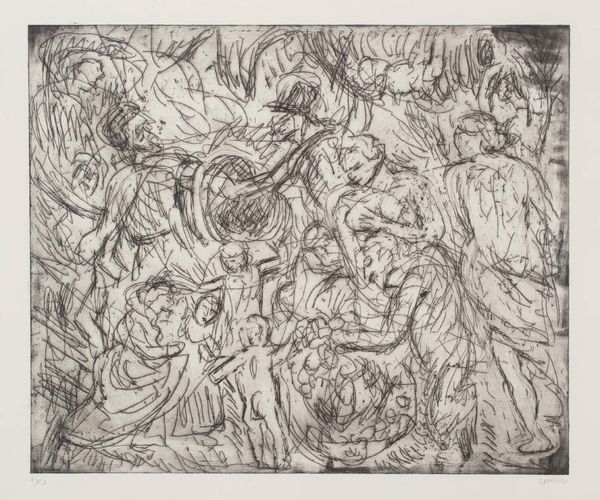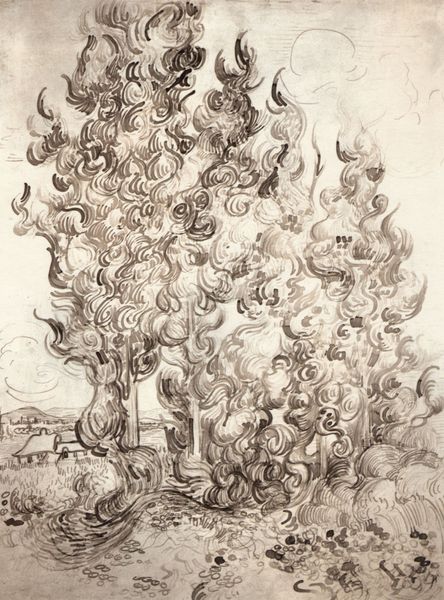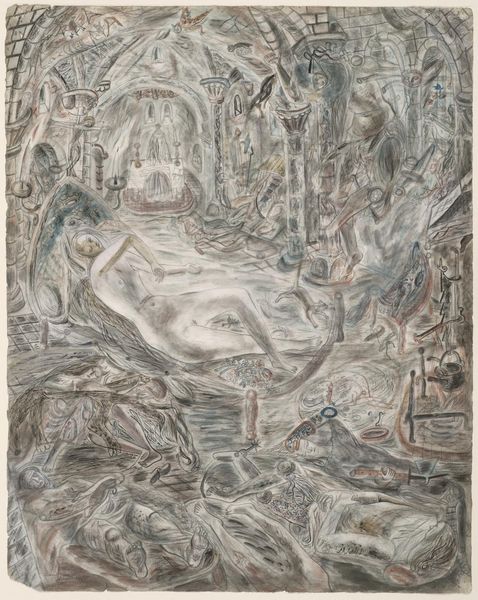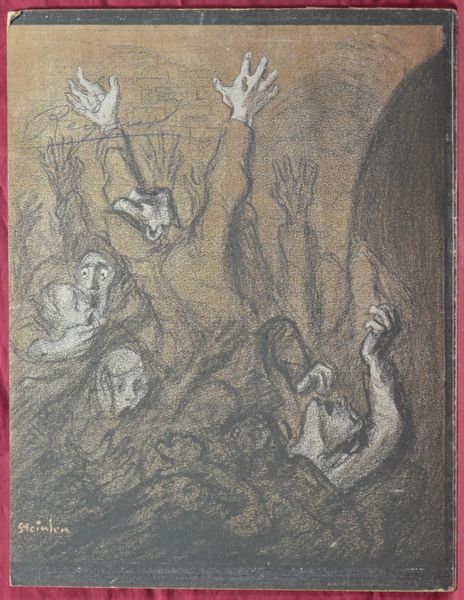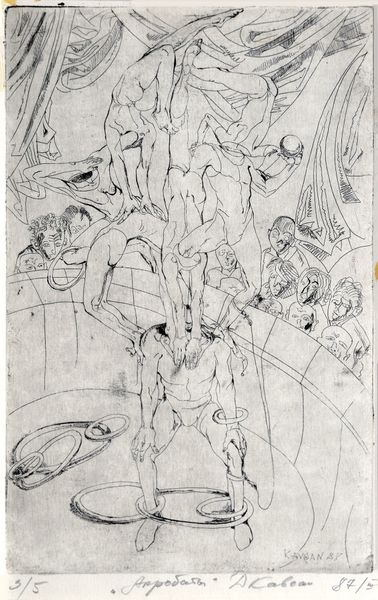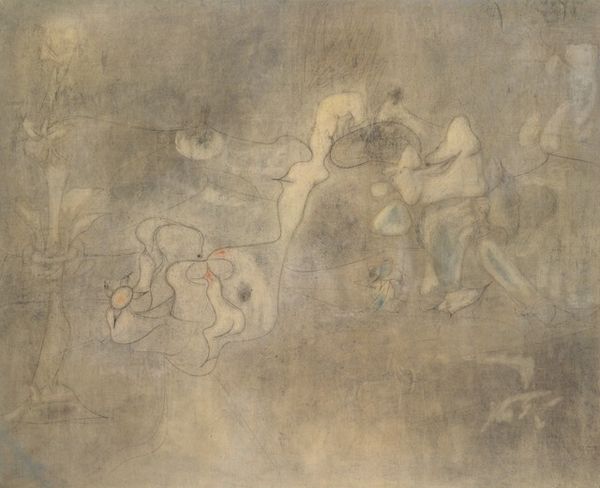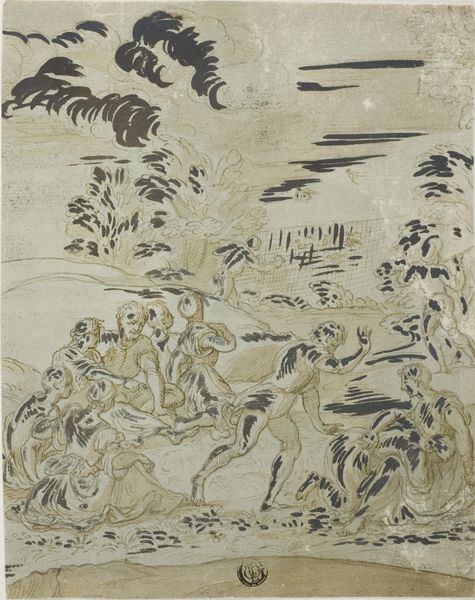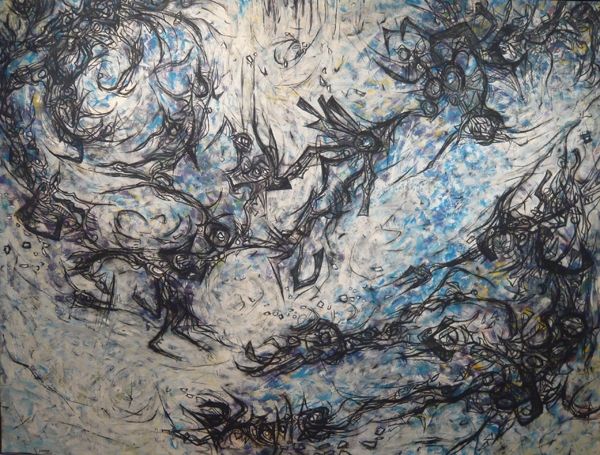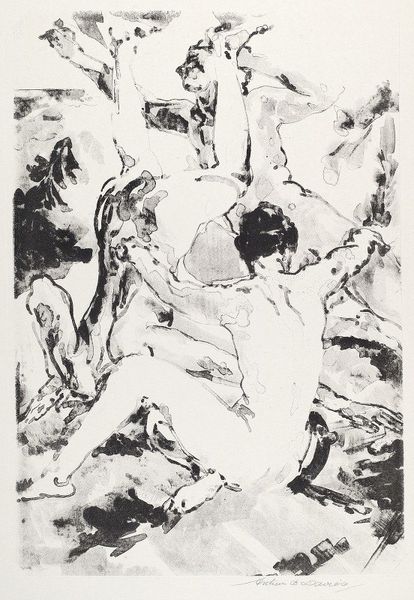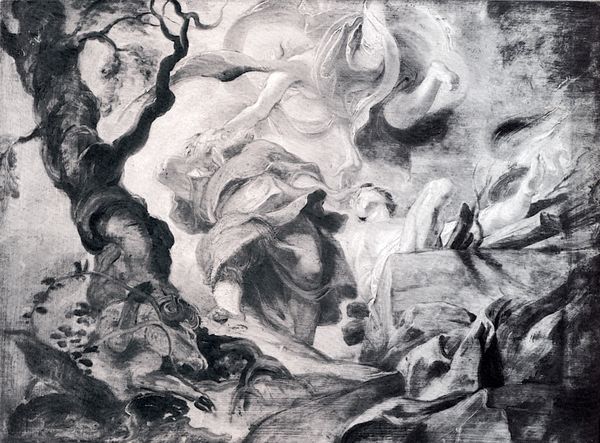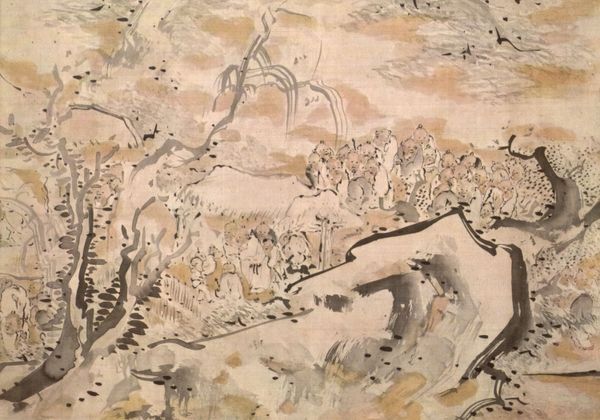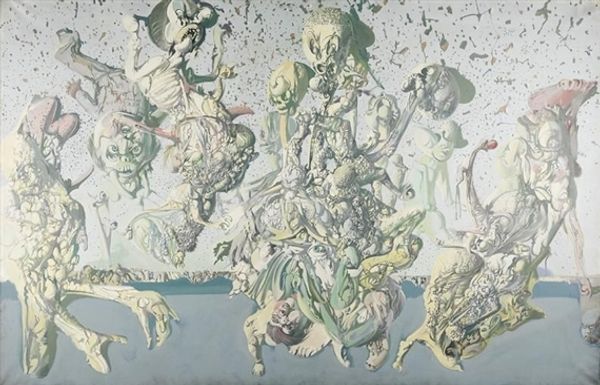
painting, paper, ink
#
portrait
#
ink painting
#
painting
#
asian-art
#
paper
#
ink
#
group-portraits
#
orientalism
#
abstraction
#
miniature
#
watercolor
Copyright: Hossein Behzad,Fair Use
Curator: Here we have Hossein Behzad's "Master the Art and Knowledge" created in 1950. It is an ink and watercolor piece on paper. What are your initial thoughts? Editor: I’m struck by the density and near monochromatic palette. The sheer number of figures crammed into the composition creates a powerful sense of visual overload, and I immediately focus on compositional elements: the soft shading and implied light source, which are at odds with the chaotic grouping. Curator: The means of production here are traditional, of course, reflecting the period. But observe how Behzad utilizes traditional materials to navigate evolving social complexities post-World War II. Ink and paper, readily available resources, underscore the accessibility of artmaking in a time of recovery and shifting cultural priorities. Editor: I appreciate that perspective. However, my gaze returns to the formal elements. Consider the artist's mastery of line. Each figure, though part of a larger mass, retains individual definition. This tension between the collective and the individual contributes significantly to the artwork's complex visual appeal, don't you agree? Curator: Agreed. The figures become abstracted—a visual manifestation of intellectual pursuit. We might consider the labour of art historical narratives themselves: the countless forgotten artists, craftspeople, and cultural workers whose efforts contribute to creating masterpieces like these. It reflects historical erasures within a stratified art system, too. Editor: Perhaps, but focusing solely on socio-economic elements threatens to flatten the experience into political commentary. Isn't it crucial to appreciate how the artist used specific forms—lines, colors, spatial organization—to suggest meaning? The composition’s dynamism keeps my attention moving through the picture plane, urging a careful interpretation of its themes. Curator: I don’t believe those modes of inquiry are mutually exclusive. Examining materials and contexts allows us to investigate meaning *beyond* purely visual interpretation. Editor: In either case, one is compelled to look again, this time armed with richer ways of considering Behzad’s technique.
Comments
No comments
Be the first to comment and join the conversation on the ultimate creative platform.
